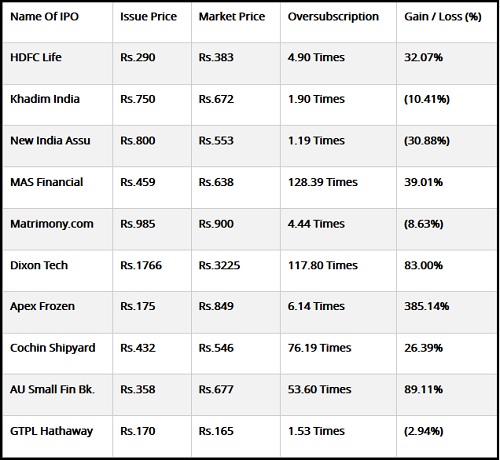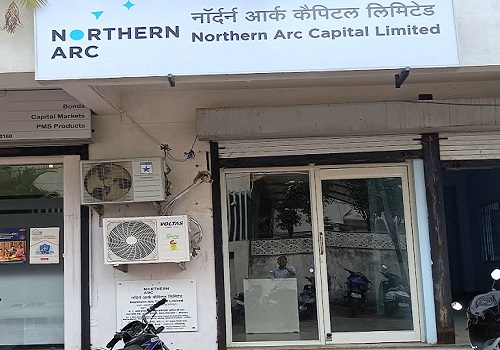IPO Oversubscription Versus Listing Gains

Follow us Now on Telegram ! Get daily 10 - 12 important updates on Business, Finance and Investment. Join our Telegram Channel
https://t.me/InvestmentGuruIndiacom
Download Telegram App before Joining the Channel
Follow us Now on Telegram ! Get daily 10 - 12 important updates on Business, Finance and Investment. Join our Telegram Channel https://t.me/InvestmentGuruIndia
Download Telegram App before Joining the Channel
IPOs or Initial Public Offerings are new issues brought out by companies to list on the stock exchanges. The IPO subscription is split across 3 categories and then the total oversubscription is judged. When you read about an IPO oversubscribed it means that the genuine demand for the IPO was more than the supply. So, if the issue size was 10 lakh shares and there was genuine demand for 1 crore shares then the IPO is said to be oversubscribed by 10 times. Normally, greater oversubscription is a sign of greater investor interest and does impact the listing price of the stock.
What does IPO oversubscription mean?
1. Oversubscription is normally a factor of demand.
2. Quality issues of companies with strong brand names and reasonable valuations have been the key factors in oversubscription.
3. When an IPO gets strong oversubscription and also is priced reasonably then it could enjoy a good listing on the stock exchanges.
Does oversubscription lead to higher listing gains?
1. There is no established relationship between oversubscription and IPO listing price
2. We know that the listing time for an IPO in India is around 7 working days
3. During this period the allotment is completed, other statutory filings are done and the stock gets listed
4. While oversubscription is one of the reasons for a good listing, it will also depend on the pricing, the market conditions at the time of listing, etc
What happens when an issue gets oversubscribed?
1. When an issue gets oversubscribed, it is a sign of excess demand for the stock. That means you cannot give full allotment to the bidders
2. Allotment differs based on the category of investors
1. For retail investors, the basis of allotment will be done to ensure that as many distinct applicants as possible get IPO allotment
2. In the case of HNI investors (who apply more than Rs.2 lakh), the allotment is proportional based on the oversubscription
3. So if an HNI applies for 10,000 shares and the oversubscription is 10 times in the HNI category, then he gets an allotment of 1000 shares
4.In the case of institutional QIBs, the IPO allotment is done on a discretionary basis
Can we look at some data to understand the relation between oversubscription and listing gain?

Following are the key takeaways on the relationship between oversubscription and post-list price. Focus is on some key IPOs in the past 6 months
1. It can be seen that paltry oversubscription levels are related to weak post listing price performance. Take the cases of GTPL Hathaway, Khadim and New India Assurance. While New India Assurance was a very large issue by size, in all these cases the oversubscription was marginal due to valuation concerns. The price-performance has been flat to negative in all these 3 cases
2. While substantial oversubscription is a good sign, it does not guarantee post-listing performance. For example, Dixon Tech was oversubscribed 117 times and has given 83% returns since listing while MAS Financial with a larger oversubscription of 128 times has only given 39% returns since listing. Similarly, Cochin Shipyards with 77 times oversubscription has just given 26% returns since listing
3.Size has been an issue for post-listing returns. For example, HDFC Life despite a 4.90 times oversubscription has only given about 32% returns whereas Apex Foods which 6.14 times oversubscription has given an incredible 385% returns since listing. All these go to prove that smaller companies that get oversubscribed tend to be more fleet-footed and can give better returns post listing
4.There is also a very strong sectoral and structural play in most of these post listing performances. For example, insurance companies have struggled because there has been a glut of insurance listings and also most of them appear to be fully priced in the absence of any benchmarks. Companies like Apex Foods that operate in sea-food had the benefit of being in the right place at the right time
5.Even in a tough industry, individual merit does count. The examples are stocks like MAS Financial and AU Small Bank which have outperformed despite operating in a highly competitive industry amidst a difficult operating environment
Key takeaways for investors and shareholders:
1. Companies with tepid oversubscription tend to underperform post listing.
2. The success of the IPO post listing is about being in the right space at the right time
3. IPOs with aggressive valuations tend to take a hit post listing
Click here to open demat account With Angelbroking






















